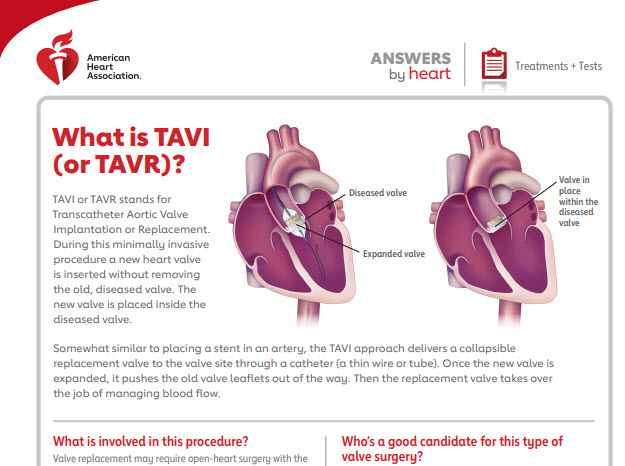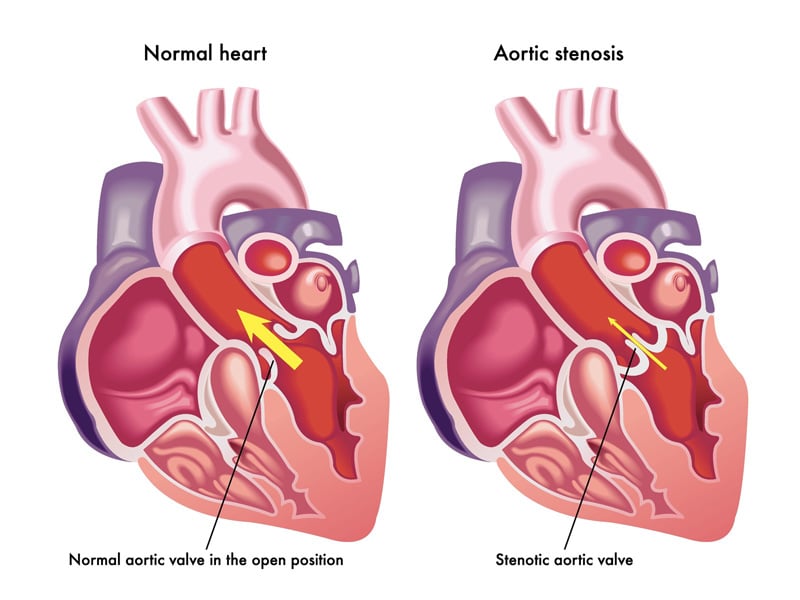The often transient nature of the conduction disturbances. Transcatheter aortic valve replacement TAVR is a minimally invasive approach to treating aortic stenosis a narrowed aortic valve that involves less pain and a quicker recovery than open heart surgery.

Transcatheter Aortic Valve Replacement Tavr Market 2019 2025 Global Industry Analysis Size Share Segmented Data By Top Companies Latest Technology Regional Demands And Opportunities Medgadget
13 It is currently estimated that as many as 200 000 patients may be considered potential TAVR candidates in the European Union and North America annually and it could further increase as TAVR.

Transcatheter aortic valve replacement tavr. TAVR is a less invasive procedure that replaces the aortic valve without opening your chest to reach the heart. TAVR replaces a faulty aortic valve with an aortic valve made from animal tissue. Transcatheter aortic valve replacement TAVR is a procedure to treat aortic stenosis a type of heart valve disease.
What is transcatheter aortic valve replacement TAVR. Transcatheter aortic valve replacement TAVR - also known as TAVI or transcatheter aortic valve implantation is a new technology for use in treating aortic stenosis. TAVR also called TAVI transcatheter aortic valve implantation is a less invasive procedure that is designed to replace a diseased aortic valve and get you back on your feet faster.
Transcatheter Aortic Valve Replacement TAVR has progressed dramatically in terms of device technologies and patient selection due in large part to the transformative work of interventional cardiologists and cardiac surgeons at NewYork-Presbyterian. Ad Search For Relevant Info Results. The TAVR procedure does not require open-heart surgery.
TAVR stands for Transcatheter Aortic Valve Replacement a minimally invasive catheter-based procedure to replace the diseased aortic valve in patients with severe aortic stenosis. Get Results from multiple Engines. Transcatheter Aortic Valve Replacement TAVR at NewYork-Presbyterian.
TAVI During this minimally invasive procedure a new valve is inserted without removing the old damaged valve. Now studies are showing that a minimally invasive procedure known as valve-in-valve transcatheter aortic valve replacement TAVR may be an option for some patients instead. An alternative to surgery for some patients is transcatheter aortic valve replacement or TAVR.
The new valve is placed inside the diseased valve. This is due to the absence of adequately powered randomized controlled trials. Transcatheter aortic valve replacement TAVR is a newer minimally invasive approach for treating aortic valve disease.
This minimally invasive procedure involves replacing the valve without removing the old damaged valve. For people who cannot undergo surgery to replace narrowed valves TAVR first provided an effective option where none existed. Transcatheter aortic valve replacement TAVR also called transcatheter aortic valve implantation TAVI is a surgical procedure to artificially replace a narrowed heart valve called the aortic valve which fails to open properly due to aortic valve stenosis.
Transcatheter aortic valve replacement TAVR has been established as a therapeutic option for patients with severe symptomatic aortic stenosis who are considered to be of intermediate high or prohibitive surgical risk. Transcatheter Aortic Valve Replacement. Until recently open-heart surgery was needed to perform a second aortic valve replacement.
A bioprosthetic valve is inserted percutaneously using a catheter and implanted in the orifice of the native aortic valve. Get Results from multiple Engines. Only a TAVR Team can tell you if it is right for you.
Consensus regarding a reasonable strategy to manage cardiac conduction disturbances after transcatheter aortic valve replacement TAVR has been elusive. The TAVR procedure has expanded the possibilities for replacing the aortic valve and we continue to help shape its evolution. What is TAVR.
15 As a result of favorable TAVR outcomes and substantial improvements in transcatheter heart valve THV technologies and implantation techniques the feasibility of. Ad Search For Relevant Info Results. Since the first procedure performed in 2002 transcatheter aortic valve replacement TAVR has improved considerably and has become the standard of care for patients with symptomatic aortic stenosis at high and intermediate risk profile when the transfemoral vascular approach is feasible.
Patients who undergo a TAVR procedure typically have an easier time recovering and experience less discomfort. Any severe aortic stenosis patients who are experiencing symptoms should be considered for TAVR. Transcatheter aortic valve replacement TAVR is a novel minimally invasive approach to treat aortic stenosis.
Instead the new valve is delivered through a catheter and wedged insided the old aortic valve using the old and damaged leaflets to secure the new valve. Transcatheter aortic valve replacement TAVR was developed as an alternative to the surgical approach in this high-risk and inoperable population. The surgery may be called a transcatheter aortic valve replacement TAVR or transcatheter aortic valve implantation TAVI.
How quickly you recover and return to your daily routine depends upon your overall state of health. Aortic stenosis is a condition in which the aortic valve does not open fully due to a thickening of the valve leaflets often caused by a buildup of calcium on the leaflets. Traditionally when people needed surgery to address their aortic stenosis they had to have an open heart surgery.

Transcatheter Aortic Valve Replacement Tavr Program Syracuse New York Ny St Joseph S Health

What Is Tavr Tavi American Heart Association

Tavr Procedure Aortic Heart Valve Replacement Tavr Myval Meril Life

Cms Revises Rules For Transcatheter Aortic Valve Replacement Tavr

Global Transcatheter Aortic Valve Replacement Tavr Market Research